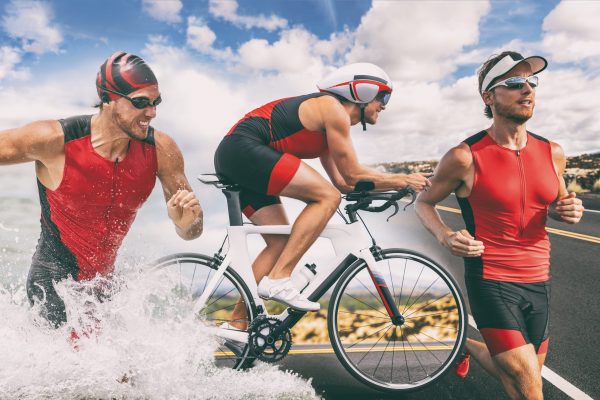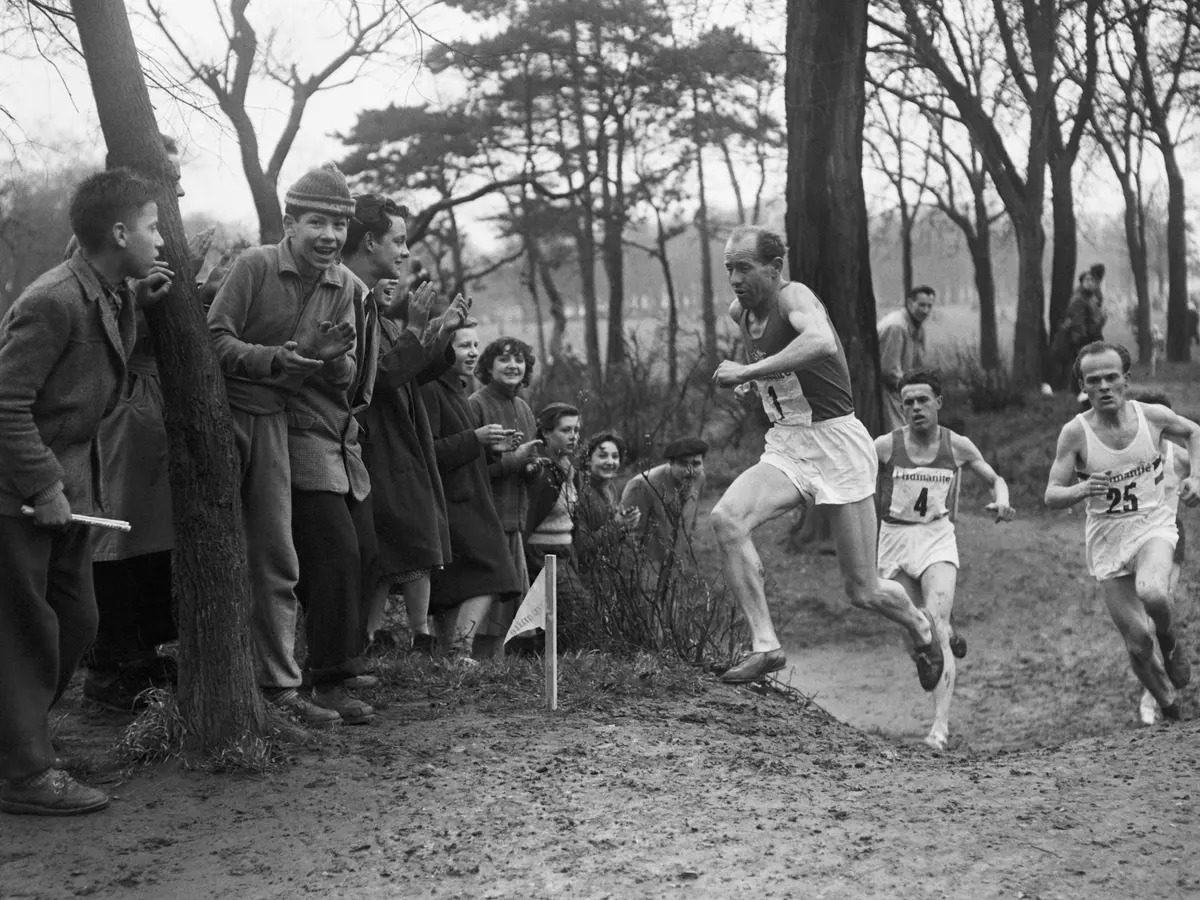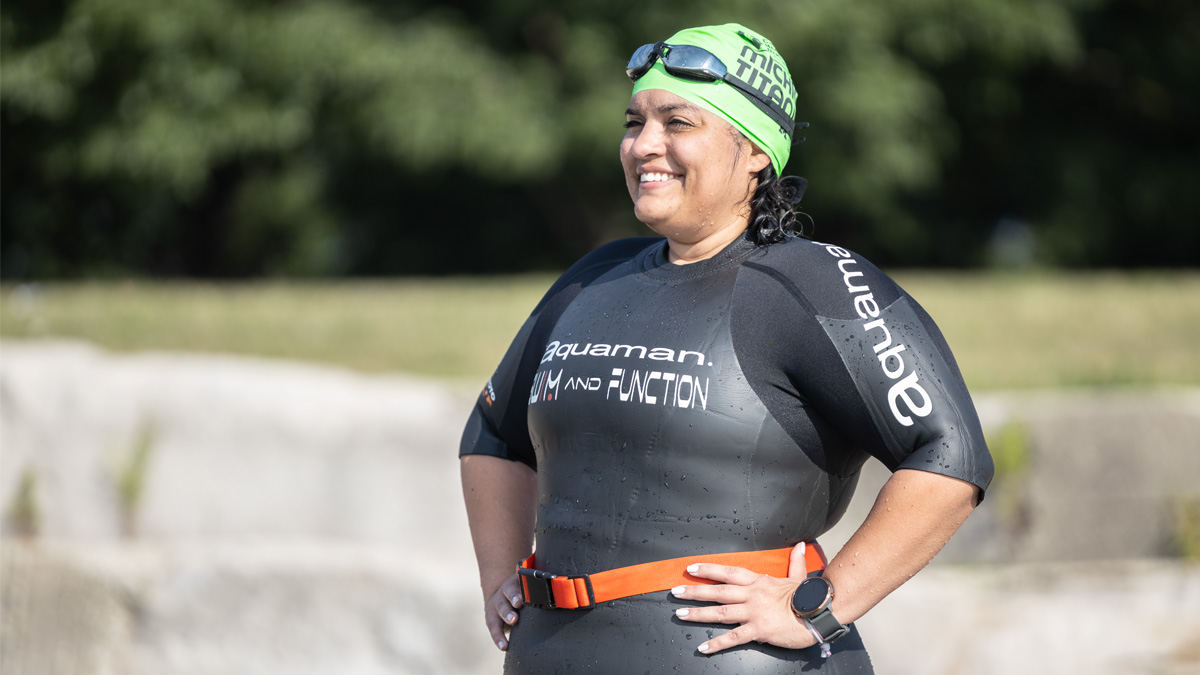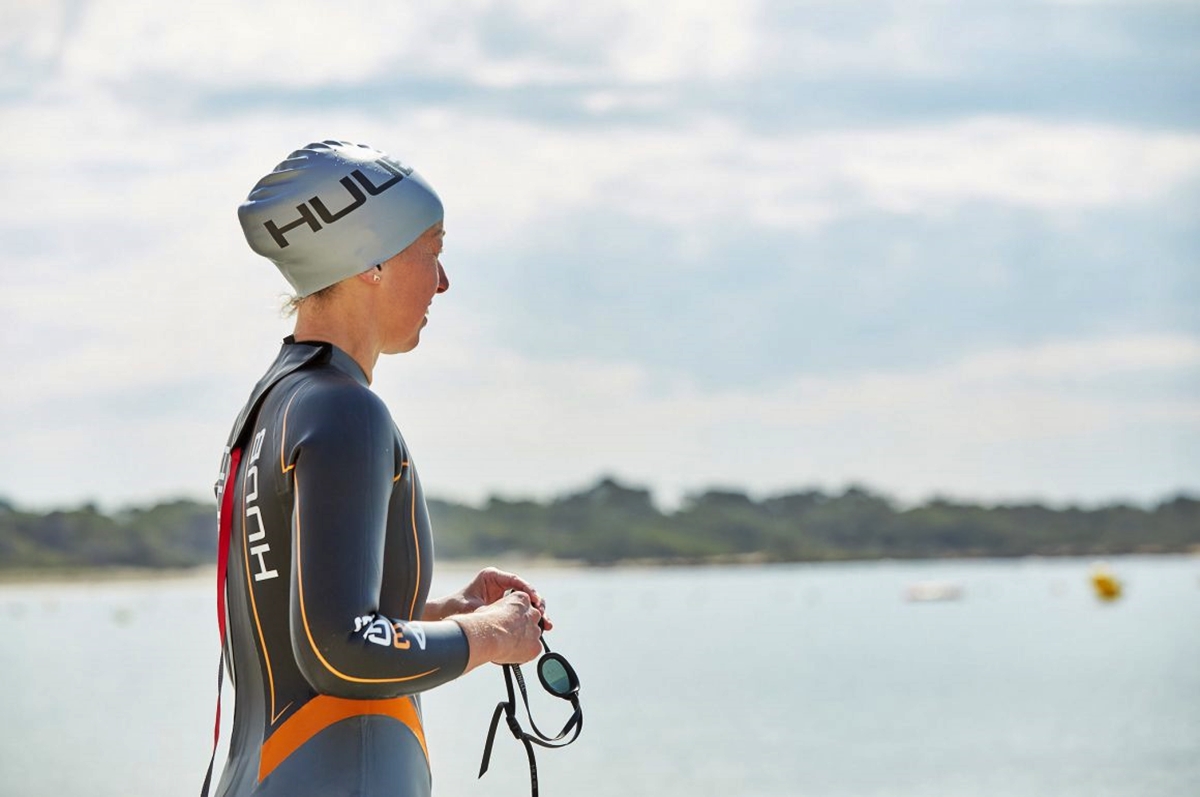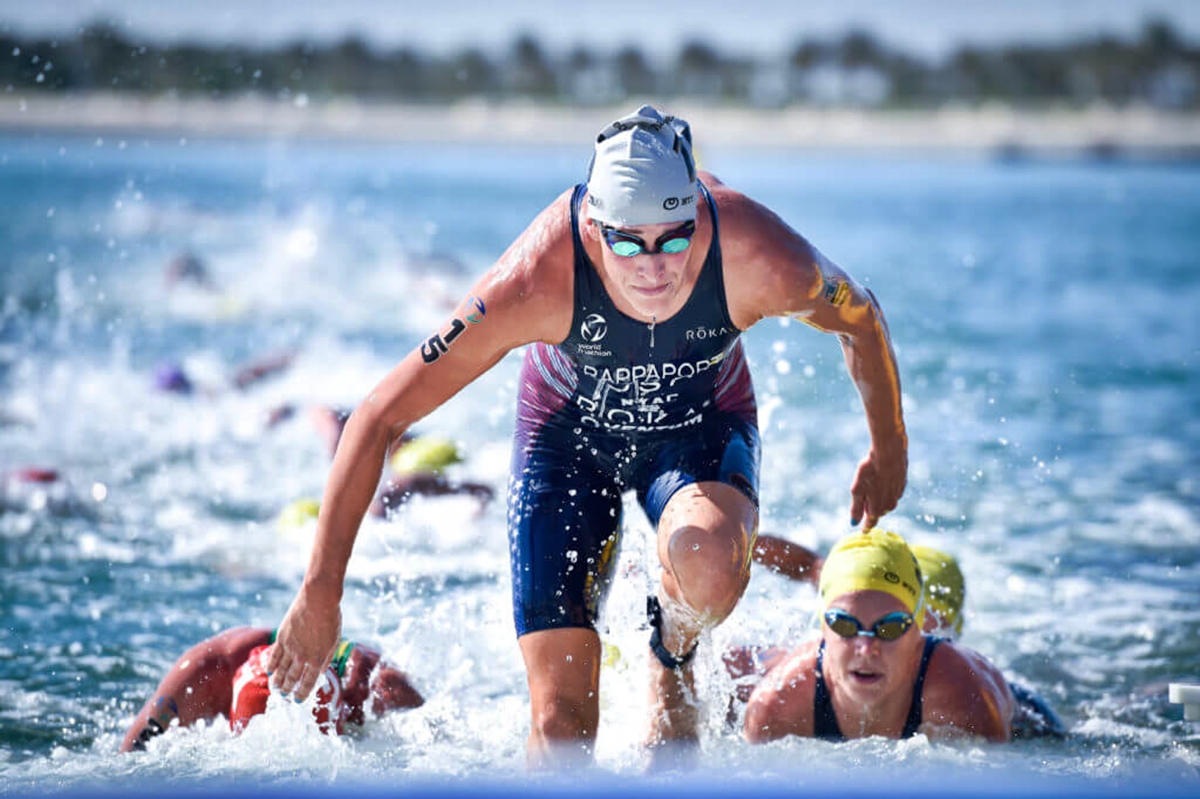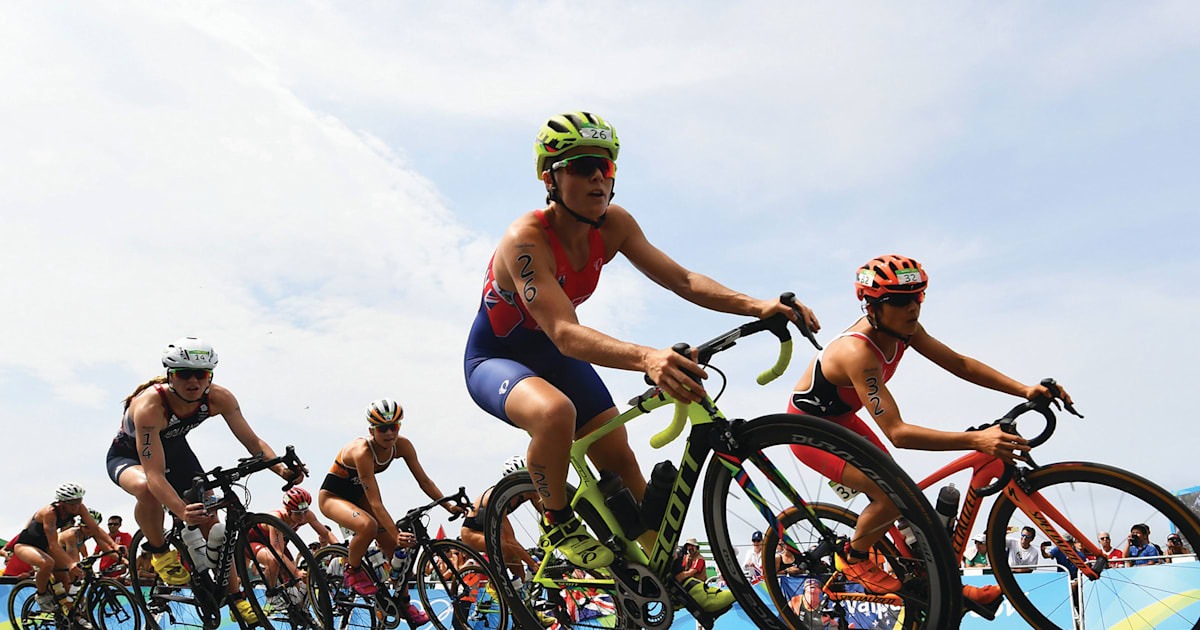

Featured
How Was The Triathlon Invented
Modified: January 2, 2024
Discover the fascinating history of the triathlon, from its origins to the modern-day event. Explore how this popular sport has evolved and become a featured athletic competition.
Introduction
The triathlon is a captivating multisport event that combines swimming, cycling, and running into a grueling test of endurance, skill, and mental toughness. Athletes push themselves to the limit as they transition from one discipline to another, showcasing their versatility and determination. But have you ever wondered how this unique and challenging event came to be?
The origins of multidisciplinary sports events can be traced back to ancient times when the Greeks introduced the concept of the pentathlon, consisting of five events: discus throw, long jump, javelin throw, running, and wrestling. Fast forward to the modern era, and we find the inspiration for the triathlon in a small community nestled in the heart of Southern California.
The birthplace of the triathlon is often attributed to the city of San Diego, where a group of athletes and fitness enthusiasts sought to create a new and exciting challenge that would test their skills across different disciplines. Little did they know that their idea would revolutionize the world of endurance sports.
Over the years, the triathlon has evolved from an obscure gathering of dedicated fitness enthusiasts to a global phenomenon that attracts participants of all ages and abilities. But what were the key moments that contributed to its growth and popularization? How did it transition from a niche activity to a widely recognized sport? Let’s delve into the fascinating history of the triathlon to find out.
Origins of Multisport Events
The concept of multisport events, where athletes compete in multiple disciplines, can be traced back to ancient civilizations. The Greeks, known for their love of athletic feats, organized the pentathlon, which consisted of five events: discus throw, long jump, javelin throw, running, and wrestling. This early form of a multidisciplinary competition showcased the diverse range of skills possessed by athletes.
Fast forward to the 20th century, and we see the emergence of the modern triathlon. While the precise origins of the triathlon are a subject of debate, many credit the San Diego Track Club as one of the key pioneers of the multisport concept in the 1970s. Members of the club, looking to diversify their training routines, began participating in informal events that combined swimming, cycling, and running.
However, the triathlon as we know it today was not yet fully formed. Various combinations of swimming, running, and cycling were tested by different groups around the world, but it was the San Diego Track Club that can be considered the catalyst for the birth of the triathlon.
Inspired by the success of the track club’s experimental events, other communities and sports clubs started hosting similar multisport races. The sport gained momentum, captivating athletes who were seeking a new and exciting way to test their fitness and endurance. The concept of the triathlon began to spread and gain recognition amongst sports enthusiasts worldwide.
It is important to acknowledge the influence of other endurance events that contributed to the development of the triathlon. For example, the French event known as the Les Tourelles de Montlouis, established in 1920, included swimming, running, and canoeing. This early combination of sports showcases the idea of incorporating different disciplines into a single athletic endeavor.
In the early days, the triathlon events often varied in terms of distance and order of the disciplines. There was no set format, and different races experimented with different combinations. It wasn’t until the 1980s that a standardization of distances and rules began to take shape, allowing the sport to evolve into the structured and defined format that we recognize today.
With the groundwork laid for multisport events, the stage was set for the birth of the triathlon. In the next section, we will explore the specific inspiration and circumstances that led to the creation of this extraordinary endurance challenge.
Inspiration for the Triathlon
The genesis of the triathlon can be attributed to a desire for diversification and the pursuit of new challenges within the realm of endurance sports. In the 1970s, as the fitness and running boom gained momentum in the United States, athletes and fitness enthusiasts in Southern California were seeking innovative ways to test their limits and push their boundaries.
One of the key inspirations for the triathlon was the concept of cross-training – the idea that engaging in different sporting disciplines can improve overall performance and prevent injury. Athletes realized that by incorporating swimming and cycling into their training routines, they could enhance their cardiovascular endurance, build strength in different muscle groups, and reduce the risk of overuse injuries commonly associated with single-sport training.
Furthermore, the coastal location of San Diego provided an ideal setting for experimenting with a combination of water-based and land-based activities. The opportunity to swim in the ocean, cycle along the coastline, and run on scenic beachfront paths added an alluring element to the multisport concept.
The early pioneers of the triathlon drew inspiration from various sources, and one notable influence was the traditional “Biathlon” event – a combination of swimming and running. Biathlon competitions were already popular in many countries, particularly in the Soviet Union and other Eastern European nations. The concept of adding cycling to the equation seemed like a logical progression.
Moreover, the growing popularity of marathons and the legendary Ironman race in Hawaii played a role in inspiring the triathlon. The Ironman, originally conceived as a challenge between swimmers, cyclists, and runners to determine the fittest athlete, captured the imagination of endurance sports enthusiasts worldwide. The success and allure of the Ironman race proved that there was an appetite for serious multisport events.
In addition to these external influences, the desire for personal development and the pursuit of new experiences were inherent motivators for the athletes who would eventually create the triathlon. They saw the potential for a new and exciting event that would truly test an athlete’s overall fitness and mental stamina. The idea of pushing oneself beyond the limits of a single discipline and embarking on a multi-stage journey resonated with their adventurous spirits.
With this inspiration in mind, the stage was set for the birth of the first ever triathlon. In the next section, we will explore the details of how this iconic event came into existence and the pioneers behind its creation.
Birth of the First Triathlon
The birth of the first triathlon can be attributed to a small group of athletes and fitness enthusiasts in San Diego, California, who sought to create a unique and challenging event that would test their skills in multiple disciplines. The concept of combining swimming, cycling, and running into a single race was introduced in the late 1970s by the San Diego Track Club.
The inaugural event took place on September 25, 1974, and was organized by the track club’s members Jack Johnstone and Don Shanahan. This groundbreaking race, often referred to as the “San Diego Track Club Triathlon,” consisted of a 5.3-mile run, a 5-mile swim in the Pacific Ocean, and a 10-mile bike ride along the scenic route of the Bonita-Sunnyside freeway.
While the distances and order of the disciplines might seem unconventional compared to today’s standard triathlon distances, the first race laid the foundation for the multisport phenomenon that would soon captivate athletes around the world.
The participants of the inaugural triathlon were primarily from the running community, as the event was initially promoted and organized within the San Diego Track Club. However, as word spread about the unique challenge and exciting nature of the race, more and more athletes from different sports backgrounds started showing interest in participating.
The birth of the first triathlon was a significant milestone, not only for the sport itself but also for the athletes who had pioneered this groundbreaking concept. They realized they had stumbled upon something special – a new and exhilarating way to test their physical and mental limits.
The success and positive reception of the inaugural event led to the continuation and growth of the San Diego Track Club Triathlon in the following years. The race attracted a growing number of participants and began to gain recognition not only locally but also on a national level.
The birth of the first triathlon laid the foundation for what would eventually become a global phenomenon. The unique combination of swimming, cycling, and running resonated with athletes from various disciplines, appealing to both endurance enthusiasts and those seeking a fresh and exciting challenge.
In the next section, we will explore the early development and popularization of the triathlon, as other communities and sports clubs began to catch onto the multisport trend and organize their own events.
Early Development and Popularization
Following the birth of the first triathlon in San Diego, the concept quickly gained traction and started to spread to other communities and sports clubs throughout the United States. Athletes and organizers were captivated by the multidisciplinary nature of the event, and triathlons began to pop up in various locations, drawing participants from different backgrounds and skill levels.
One of the key factors in the early development and popularization of the triathlon was the formation of the International Triathlon Union (ITU) in 1989. The ITU played a significant role in standardizing the rules, distances, and formats of triathlon events, providing a framework that allowed the sport to expand and grow.
The triathlon community also saw the rise of influential figures who contributed to the sport’s development. One such figure was Dr. Steve Tarpinian, a passionate advocate and promoter of the triathlon. Tarpinian organized the first-ever international triathlon, held in New York in 1982, which drew athletes from around the world and helped elevate the sport’s profile.
As the popularity of triathlons grew, significant races started to emerge, attracting elite athletes and media attention. One notable event was the Ironman Triathlon held in Kona, Hawaii. Since its inception in 1978, the Ironman gained a reputation as one of the most grueling endurance races on the planet and served as a significant catalyst in the sport’s popularization.
Television coverage of the Ironman Triathlon, along with other high-profile races, brought the sport into households worldwide, captivating audiences and inspiring a new wave of triathletes. The media exposure helped to shed light on the physical and mental challenges involved in the sport, as well as the incredible feats of athleticism displayed by triathletes.
The development of governing bodies and the increase in media coverage greatly contributed to the growth of the triathlon. The sport began to attract corporate sponsorships, providing financial support and resources for the organization and promotion of events. The growth of triathlon clubs and training groups also played a role in the popularization of the sport, as they provided a sense of community and support for aspiring triathletes.
With the popularity of triathlons on the rise, the sport ventured beyond the borders of the United States and gained international recognition. The establishment of triathlon federations and organizations in different countries further propelled the sport’s growth and led to the formation of regional and international competitions.
In the next section, we will explore how the triathlon format evolved over time, adapting to the needs and preferences of both athletes and organizers.
Evolution of the Triathlon Format
As the triathlon gained popularity in the 1980s, the need for standardization of distances and formats became evident. This led to the evolution of the triathlon format, with organizers and athletes seeking to create a consistent and fair experience for all participants.
In the early years, triathlon distances varied between events, with different races experimenting with combinations of swimming, cycling, and running. However, as the sport progressed, a consensus emerged on standard distances for different triathlon distances.
The sprint distance triathlon, typically considered an entry-level race, consists of a 750-meter swim, a 20-kilometer bike ride, and a 5-kilometer run. This format is popular for beginners and those looking for a shorter, faster race.
The Olympic distance triathlon, also known as the standard distance, reflects the distances used in the Olympic Games. It consists of a 1.5-kilometer swim, a 40-kilometer bike ride, and a 10-kilometer run. This format has become one of the most widely recognized and participated in triathlon distances.
As the sport continued to grow, additional distances were introduced to cater to different skill levels and ambitions of athletes. The half Ironman, or 70.3, encompasses a 1.9-kilometer swim, a 90-kilometer bike ride, and a 21.1-kilometer run. For those seeking the ultimate challenge, the full Ironman, or 140.6, pushes athletes to their limits with a 3.8-kilometer swim, a 180-kilometer bike ride, and a marathon-distance run of 42.2 kilometers.
Another aspect of the triathlon format that evolved over time was the transition area. Transition areas are designated zones where athletes switch between disciplines and prepare for the next leg of the race. Initially, these transitions were simple and informal, with athletes changing clothes and equipment on the spot. As the sport developed, transition areas became more organized and efficient, with designated spaces for each athlete’s gear and clear guidelines on how to navigate through the transitions.
The use of timing chips and electronic timing systems also became widespread, allowing for accurate tracking of individual splits and overall race times. This technological development enhanced the competitiveness and precision of triathlon events and provided valuable data for athletes to analyze their performance.
The format of triathlon relay events has also gained popularity, allowing teams to compete and tackle each discipline collectively. In relay triathlons, one team member swims, another cycles, and a third member completes the run. This format appeals to both seasoned triathletes who want to experience racing as a team and newcomers who may feel more comfortable focusing on a single discipline.
The evolution of the triathlon format has not only provided structure and consistency to the sport but has also offered athletes a range of options to suit their abilities and goals. With diverse distances and relay options available, triathlon has become an inclusive sport that embraces athletes of all backgrounds and skill levels.
In the next section, we will explore how the triathlon grew and expanded beyond its origins in Southern California to become a globally recognized and celebrated sport.
Growth and Globalization
After gaining traction in the United States, the sport of triathlon experienced rapid growth and globalization. As more athletes embraced the multisport challenge and the sport gained recognition, it spread to different continents, captivating athletes and spectators worldwide.
One of the factors contributing to the global growth of triathlon was the establishment of national and international governing bodies. These organizations, such as the International Triathlon Union (ITU), set standards, organized competitions, and fostered the growth of the sport on a global scale. The ITU played a crucial role in developing a unified set of rules and guidelines for triathlon events and worked towards the inclusion of triathlon in the Olympic Games.
The inclusion of triathlon as an Olympic sport was a significant milestone for the sport’s growth and popularity. Triathlon made its Olympic debut at the Sydney 2000 Games, with both men’s and women’s races becoming part of the prestigious event. The Olympic exposure catapulted triathlon into the global spotlight, inspiring a new generation of athletes and bringing the sport to a wider audience.
The growth of triathlon was not limited to the elite level. The sport witnessed an explosion of participation from amateur athletes, with triathlon events becoming more accessible and inclusive. Races of all distances, from sprint to Ironman, began popping up in communities worldwide, giving individuals the opportunity to challenge themselves and embrace the multisport lifestyle.
The accessibility of triathlon was further heightened by the development of training programs, coaching services, and online resources tailored for athletes of all abilities. These resources provided support and guidance for beginners, helping them navigate the complexities of training, equipment selection, and race preparation.
Triathlon clubs and communities also played a vital role in the global growth of the sport. Local triathlon clubs provided a platform for athletes to connect, train together, and share their passion for the sport. These close-knit communities offered a supportive environment for newcomers and seasoned athletes alike, fostering a sense of camaraderie and further fueling the popularity of triathlon.
With the expansion and globalization of triathlon, international triathlon competitions emerged, showcasing the talent and skill of athletes from around the world. Events such as the ITU Triathlon World Cup Series, Ironman World Championship, and Challenge Family events attracted elite triathletes, media coverage, and enthusiastic spectators from diverse nations.
The sport of triathlon continues to grow in popularity, with new triathlon events being organized in different countries and regions each year. Multinational companies and sponsors have recognized the global reach and appeal of the sport, providing financial support and infrastructure to promote the growth of triathlon and elevate its status as a premier endurance sport.
The growth and globalization of triathlon not only brought opportunities for competitive athletes but also created a thriving community of fitness enthusiasts, adventure seekers, and individuals looking to challenge themselves both physically and mentally.
In the final section, we will explore the significance of triathlon becoming an Olympic sport and the impact it has had on the sport’s future.
Triathlon as an Olympic Sport
The inclusion of triathlon as an Olympic sport was a watershed moment that catapulted the sport into the global sporting arena. Triathlon made its debut at the Sydney 2000 Olympic Games, marking a significant milestone in the history of the sport.
The decision to include triathlon as an Olympic event was a testament to the growth, popularity, and increasing global appeal of the sport. The Olympic recognition brought with it heightened prestige, increased visibility, and a platform for athletes to showcase their abilities on the world stage.
Triathlon as an Olympic sport follows the standard distance format, with a 1.5-kilometer swim, a 40-kilometer bike ride, and a 10-kilometer run for both men and women. The race format consists of a mass start, where athletes compete side by side in each discipline, transitioning from one to another as quickly as possible.
The Olympic triathlon has become known for its exhilarating and competitive nature, with athletes pushing their limits in a fast-paced, high-pressure environment. The race showcases the incredible athleticism, endurance, and mental resilience required to excel in the sport of triathlon.
The inclusion of triathlon in the Olympics has had a profound impact on the sport’s development and the athletes who pursue it. The Olympic platform provides an opportunity for triathletes to gain recognition, secure sponsorships, and attract support from their respective national governing bodies.
Olympic triathlon has also served as an inspiration for aspiring athletes around the world. The sight of athletes competing at the highest level, representing their countries and striving for the coveted Olympic medals, has motivated countless individuals to take up the sport and pursue their triathlon dreams.
The Olympic Games offer a unique opportunity for triathlon to reach a massive global audience. The broadcast coverage of the Olympic triathlon exposes the sport to millions of viewers, shining a spotlight on the athleticism, strategy, and excitement that defines triathlon racing.
The Olympic status of triathlon has also helped to attract corporate sponsorships and financial support, allowing for greater investment in the development of the sport at all levels. This support has resulted in improved training facilities, coaching programs, and opportunities for athletes to compete and represent their nations on the international stage.
Furthermore, triathlon’s inclusion in the Olympics has led to increased participation and interest in the sport. The Olympic designation has inspired more individuals to take up triathlon, as they aim to experience the same challenges and cross the same finish lines as their Olympic idols.
As an Olympic sport, triathlon continues to grow in popularity and prestige. The competition among nations and the quest for Olympic medals drive athletes to push their boundaries and strive for excellence. The addition of triathlon to the Olympic program has undoubtedly solidified its place as one of the most exciting and demanding endurance sports in the world.
In the concluding section, we will reflect on the incredible journey of the triathlon and the enduring appeal it holds for athletes and enthusiasts alike.
Conclusion
The triathlon has come a long way since its humble beginnings in Southern California in the 1970s. From a group of athletes seeking to diversify their training routines, the sport has evolved into a global phenomenon that captures the hearts and minds of athletes worldwide.
The concept of combining swimming, cycling, and running into a single endurance event struck a chord with athletes looking for new challenges and opportunities for personal growth. Triathlons quickly gained popularity, attracting participants from diverse backgrounds and skill levels.
The sport’s growth and popularization can be attributed to various factors. From the establishment of governing bodies and international competitions to the inclusion of triathlon as an Olympic sport, each step has propelled triathlon into the mainstream consciousness.
The evolution of the triathlon format, with standardized distances and efficient transition areas, has made the sport more accessible and appealing to athletes of all abilities. Training programs, coaching services, and online resources have further supported the growth of triathlon, empowering individuals to pursue their goals and embrace the multisport lifestyle.
Triathlon clubs and communities have fostered a sense of camaraderie and support, providing a platform for athletes to connect and thrive. The international recognition and media coverage of notable races, such as the Ironman Triathlon and ITU Triathlon World Cup, have helped elevate triathlon to new heights and inspire a new generation of athletes.
Lastly, the inclusion of triathlon as an Olympic sport has been a pivotal moment in the sport’s history. The Olympic platform has given triathletes the opportunity to compete on the world stage, attracting sponsorship and generating a greater global following.
As the triathlon continues to evolve, it remains a sport that embodies the principles of endurance, perseverance, and personal achievement. From beginners seeking to challenge themselves to elite athletes vying for Olympic glory, the triathlon offers a unique and exhilarating experience for all who take part.
Whether it’s the thrill of crossing the finish line, overcoming physical and mental obstacles, or simply embracing an active and healthy lifestyle, the triathlon has captured the imaginations of countless individuals and will continue to leave a lasting impact on the world of endurance sports.

